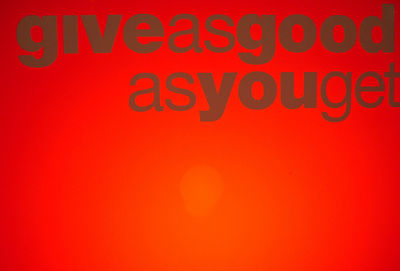Defining OER
| Course dashboard for #OCL4Ed | ||
|---|---|---|
| Educators care: Why open matters? Part 2 | Video Signpost - David Wiley | Ownership of ideas | Defining OER | OER benefits and myths | Summary and activity | 2nd Learning reflection | |
The concept of open education encapsulates a simple but powerful idea that the world’s knowledge is a public good and that the open web provides an extraordinary opportunity for everyone to share, use, and reuse knowledge. In short the "open" in Open Educational Resources means they must be free and provide the permissions to reuse, revise, remix and redistribute. However, we need to examine the concept in more detail.
|
Option 1
Option 2
Option 3
Share your favourite definition on WEnotes, twitter or Google+, for example:
|
Contents
Reflecting on the requirements for a definition of OER
There is a diverse range of opinion on the specific requirements of what constitutes an open education resource. In writing about the definition of OER, David Wiley indicates that the word "open" can have different meanings in different contexts and in practice it is a continuous (not binary) construct. "A door can be wide open, mostly open, cracked slightly open, or completely closed. So can your eyes, so can a window, etc."[4]A precise definition of OER impinges on the range of opinions regarding fundamental questions associated with interpretations of the meaning of the freedom to learn, for example:
- Should a definition of OER include the requirement of an open content license, for example a Creative Commons license or the GNU Free Documentation License?
- Is no-cost access to a learning resource on the Internet sufficient to qualify for a definition of OER?
- Must a definition of OER incorporate the rights to adapt and modify a resource without restriction for different learning contexts?
- Does the concept of freedom include the right to earn a living from OER?
- Are restrictions on reuse permissible for a definition of OER?
- Is there a requirement for technical related provisions, for example that an OER must be distributed in editable file formats?
Critical analysis of an OER definition
Consider, for example, the following description of OER and reflect on the questions which follow.
The Organisation for Economic Co-operation and Development (OECD) describes OER as:
| “ | ...digitised materials offered freely and openly for educators, students and self-learners to use and reuse for teaching, learning and research. OER includes learning content, software tools to develop, use and distribute content, and implementation resources such as open licences. This report suggests that "open educational resources" refers to accumulated digital assets that can be adjusted and which provide benefits without restricting the possibilities for others to enjoy them. | ” |
| —OECD, 2007[5] | ||
These questions illustrate that a definition of OER entails more than the requirement to provide access to digital resources on the web. Moreover, there are multiple dimensions which must be considered when evaluating the "openness" of open content. Educators and administrators need to consider their choices regarding permissions carefully when creating OER and deciding which OER to incorporate in their teaching because this impacts on the freedoms associated with the resources as well as the freedoms of future users.
Towards a definition of OER for a sustainable open education ecosystem
Our collective understanding of the definition of OER is maturing in parallel with increased adoption of open education in our formal education institutions around the world. In nurturing the development of a sustainable open education ecosystem, there is growing consensus that a definition of OER ideally needs to incorporate three interrelated dimensions:- Educational values: OER should be free;
- Pedagogical utility: OER should embed the permissions of the 4Rs (reuse, revise, remix and redistribute); and
- Technology enablers: Technology and media choices should not restrict the permissions of the 4R framework.
Each component is summarised below.
Educational values: OER should be free
When thinking about the free in OER, many people associate this with learning content which is accessible at no-cost to the user. However, free also refers to personal liberty -- the freedom or permission to act without restriction. Consequently, there are two dimensions which need to be considered under the meaning of free in OER: no-cost (gratis) and the freedoms of the users (liberty).
- OER must be accessible at no-cost to the user (gratis)
- To qualify as OER, there must always be a version of the materials freely accessible at no-cost to the user. This does not necessarily imply that distributors of OER content may not charge for packaging, distribution or value-added services, but it does require that a version of the OER is always available at no-cost. Consider for example the OER Handbook hosted on WikiEducator. Educators are free to use, adapt or modify a copy of the OER Handbook at no cost. Moreover, users are free to copy the OER Handbook and host this on any website of their choosing or print the book themselves. Some users may choose to purchase a bound version of the OER Handbook from Lulu.com or download a version at no-cost on the Lulu.com website.
- OER should respect the freedoms of the users (liberty)
- The freedoms of OER users are derived from the essential freedoms of the free software movement. They are encapsulated in the 4R framework (reuse, revise, remix, redistribute) and decisions about technology and media choices below.
- For instance, restricting the right to earn a living from OER can be considered a material restriction of the essential freedoms and rights to redistribute OER. Consequently the OER Foundation does not advocate the use of the non-commercial restriction as in the case of some OER projects. The discussion on user freedoms in the context of OER is a complex debate and falls outside the ambit of this unit. However, you can read more about these issues in the suggested readings below.
Pedagogical utility: The 4R framework
With OER you are free to:
| ||||||
Content is open to the extent that its permissions enable users to engage in the 4R activities. Content is less open to the extent that its permissions restrict users access (e.g., forbidding derivative works or prohibiting commercial use) to the 4R activities.
Technology and media choices
Digital technologies are the enablers for the 4Rs above. However, technology and media choices can also restrict the 4R activities. There are two important considerations pertaining to technology and media choices for OER:
- Access to the tools required for editing, and
- Ensuring that OER is meaningfully editable.
In both instances, the minimum requirement is to adopt open standards for storing OER. An open standard refers to file formats which are publicly available with unencumbered rights to use the standards or specification concerned. For example, the open web is built upon the specifications of the World Wide Web Consortium which ensures that all browsers can implement the protocols on a royalty free basis. In this way, both free software and closed software browsers can access and interpret the digital information on the world wide web.
Similarly OER should be stored and distributed using open standards and formats which are easily editable. In this way we can ensure that:
- All users will have unrestricted access to the tools required to revise and remix OER content. All users should be free to use the software of their choice, and should not be required to sacrifice their freedoms or be forced to purchase software licenses in order to participate freely in the 4Rs. Therefore, digital content which necessitates the user to acquire a software license in order to modify or adapt the source materials imposes restrictions in the 4R activities. So for example, video files should avoid using closed file formats like Windows Media Video (WMV) or Flash Video Format (FLV) which may force some users to sacrifice their freedoms by requiring the installation of patented or encumbered codecs for editing these files. Educators and OER developers should be encouraged to respect the freedoms of future users by providing open file formats of their creative works.
- All users have the capacity to edit an OER to suit their local needs. For example, while the Portable Document Format (PDF) is an open standard for document exchange it is not easy to edit other than minor changes. OER offered in this format only cannot be revised easily for suitable local use.
Any questions?
Further reading (optional)
Notes
- ↑ Atkins, D.E., Brown, J.S. & Hammond, A.L. (February 2007). A Review of the Open Educational Resources (OER) Movement: Achievements, Challenges, and New Opportunities. Report to The William and Flora Hewlett Foundation. p. 4.
- ↑ Downes, S. 2011. Open Educational Resources: A Definition.
- ↑ Creative Commons. Undated. What is OER?. Retrieved 20 June 2012.
- ↑ 4.0 4.1 Wiley, D. (No Date). Defining the "Open" in Open Content. Retrieved 27 December 2010.
- ↑ Organisation for Economic Co-operation and Development (OECD). (2007). Giving Knowledge for Free: The Emergence of Open Educational Resources. Paris: Centre for Educational Research and Innovation, OECD. p. 10.

